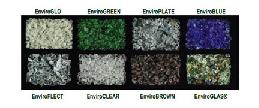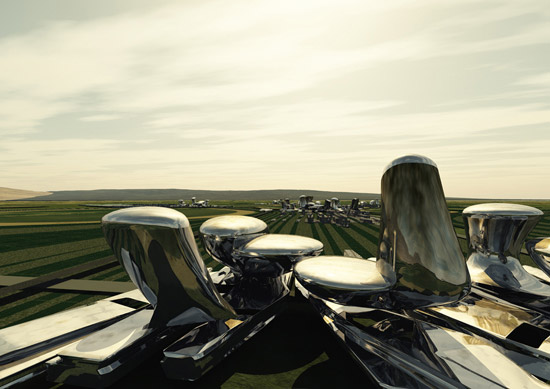
Eco- Factor: Self sustaining environmentally friendly agro urban settlement
Khataba is a self sustaining agro urban eco-system by Italian designer Marian Colleti planned to house and meet food and energy production and consumption needs of Nile Delta’s growing population. The urban agro environment comprises of agricultural fields laid out in linear and circular morphological patterns interspersed with town centers also called the Agropolis.
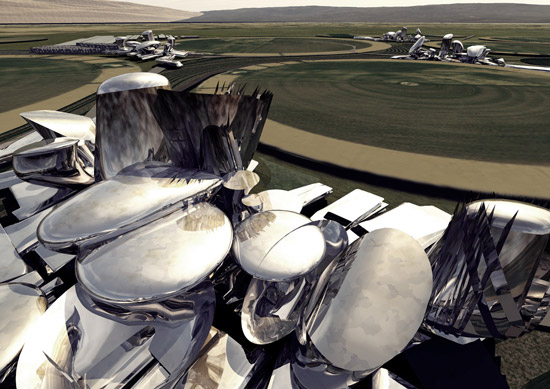
This matrix of interconnected and complimented nuclei is designed to have zero carbon foot print. The Agropolis is proposed to use recycled waste products, including sewage, household garbage, energy, etc. whereas the waste water is thought to be utilized for irrigating the nearby fields. The settlements buildings including some of the circular fields would be harnessing solar energy thereby helping meet the energy requirements. To increase solar energy generation the building façade would be layered with pixels and solar arrays provided with dyed glass and fiber optics.
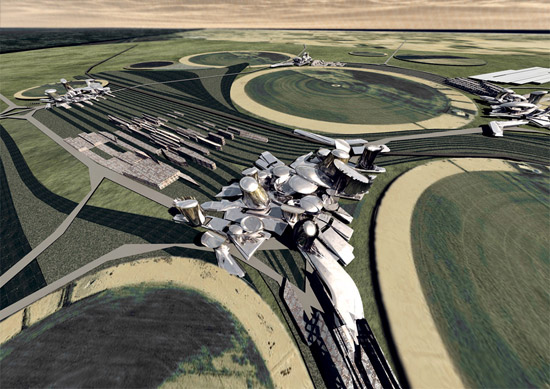
The design promotes sustainable food production and consumption in accordance with ecologically balanced agricultural practices. For eg. The circular shape of the fields helps irrigate large surfaces with very little water thereby saving water. Proximity of production and consumption helps attract the local population, mainly farmers, craftsmen and other skilled workers are thought to be attracted to the Al Jadida Agropolis where products can be traded under a single roof foregoing transportation costs.

The project envisages a layered settlement with a host of facilities for agricultural manufacturing, along with housing, commercial, cultural, educational, and other ancillary services all at one place. This density of construction is expected to allow maximum utilization of surrounding farmland for agricultural purposes. The new agro urban settlement will also be provided with new transportation infrastructure comprising new railway tracks.
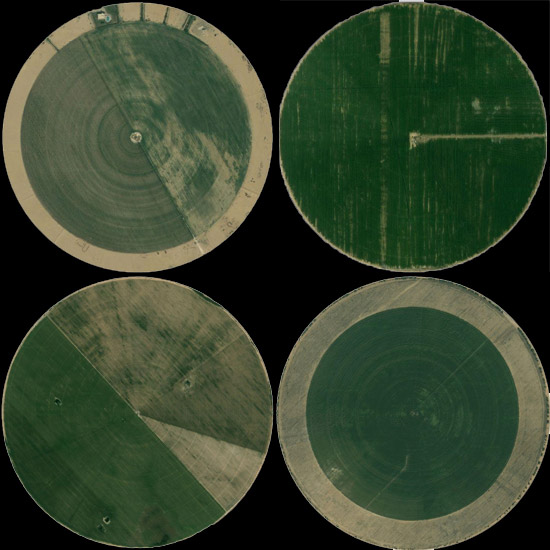
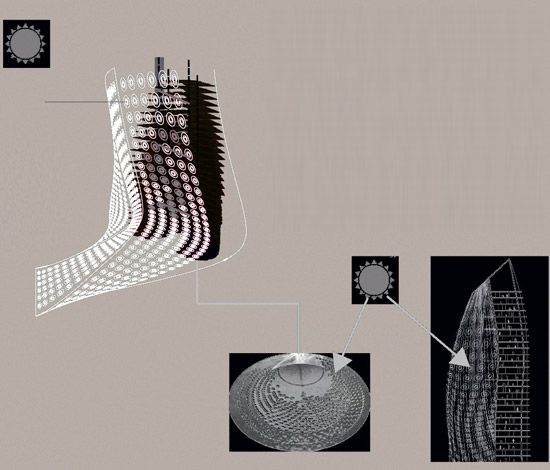

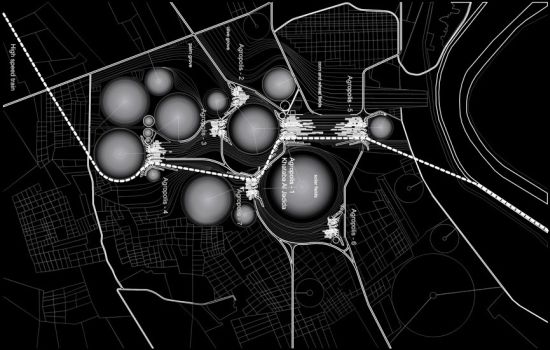

Via: Design Boom



